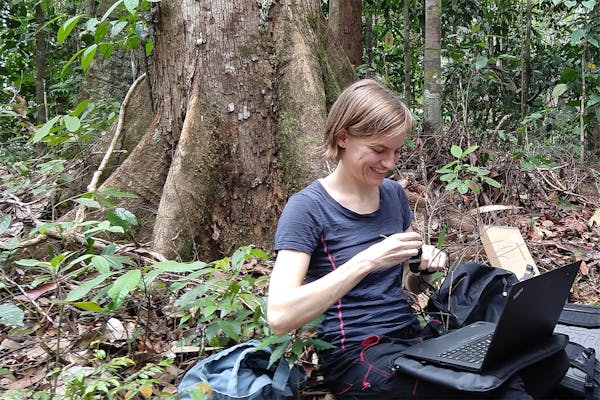What is biomimicry? Five groundbreaking designs inspired by Nature
- Nature Conservation
- Energy Transition
- Energy Efficiency
- Transportation Efficiency
- Science & Technology
“Life finds a way.” … This memorable line from Jurassic Park applies not only to the dinosaurs in the movie but to the billions of years life has been evolving on Earth. From microscopic bacteria to the largest whales, life has thrived through adaptation, innovation, and problem-solving.
As we face modern-day challenges, nature’s designs provides brilliant solutions. Biomimicry—drawing inspiration from natural systems and forms—has sparked groundbreaking innovations that are both efficient and sustainable. By learning from nature, we can improve how we build, create, and live.
What is biomimicry?
Biomimicry is the practice of studying nature's designs, processes, and strategies to solve human problems. It involves observing how organisms have adapted over time and applying those insights to innovate and improve our own technologies and systems.
Coined by biologist Janine Benyus, co-founder of the Biomimicry Institute, the concept urges us to move beyond simply extracting from nature. Instead, we are encouraged to learn from the remarkable ways life evolved, survived, and flourished for billions of years.
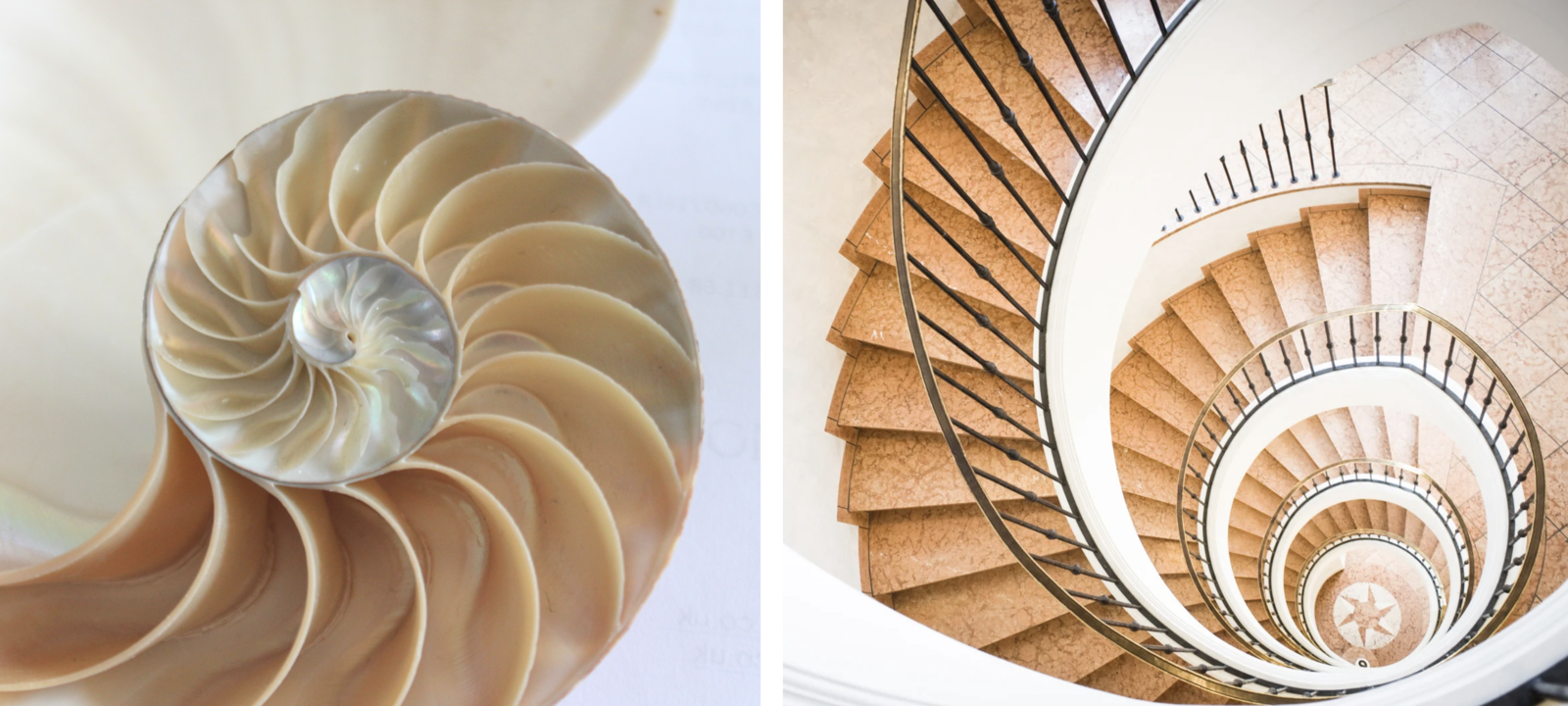
Nautilus shell vs. spiral staircase. Image credit: Cheekylorns and FooTToo from Getty Images via Canva
The original practitioners of biomimicry
The idea of learning from nature is not new. Indigenous peoples around the world have long understood that nature holds profound knowledge, offering lessons for living in harmony and balance. These communities have developed practices based on observing and collaborating with natural systems—an approach that modern biomimicry is only beginning to fully appreciate.
As botanist and author Robin Wall Kimmerer writes in Braiding Sweetgrass:
“But in Native ways of knowing, human people are often referred to as 'the younger brothers of Creation.' We say that humans have the least experience with how to live and thus the most to learn—we must look to our teachers among the other species for guidance.”
This perspective shifts our view of humans from conquerors of nature to humble students. Indigenous knowledge reminds us that biomimicry has been a central principle in innovation throughout human history.
Five amazing examples of biomimicry
From transportation to everyday tools, countless innovations have been inspired by nature’s ingenious designs. Here are five remarkable examples of biomimicry that show how learning from nature can help solve today's challenges.
1. Kingfishers and Japan’s high-speed trains
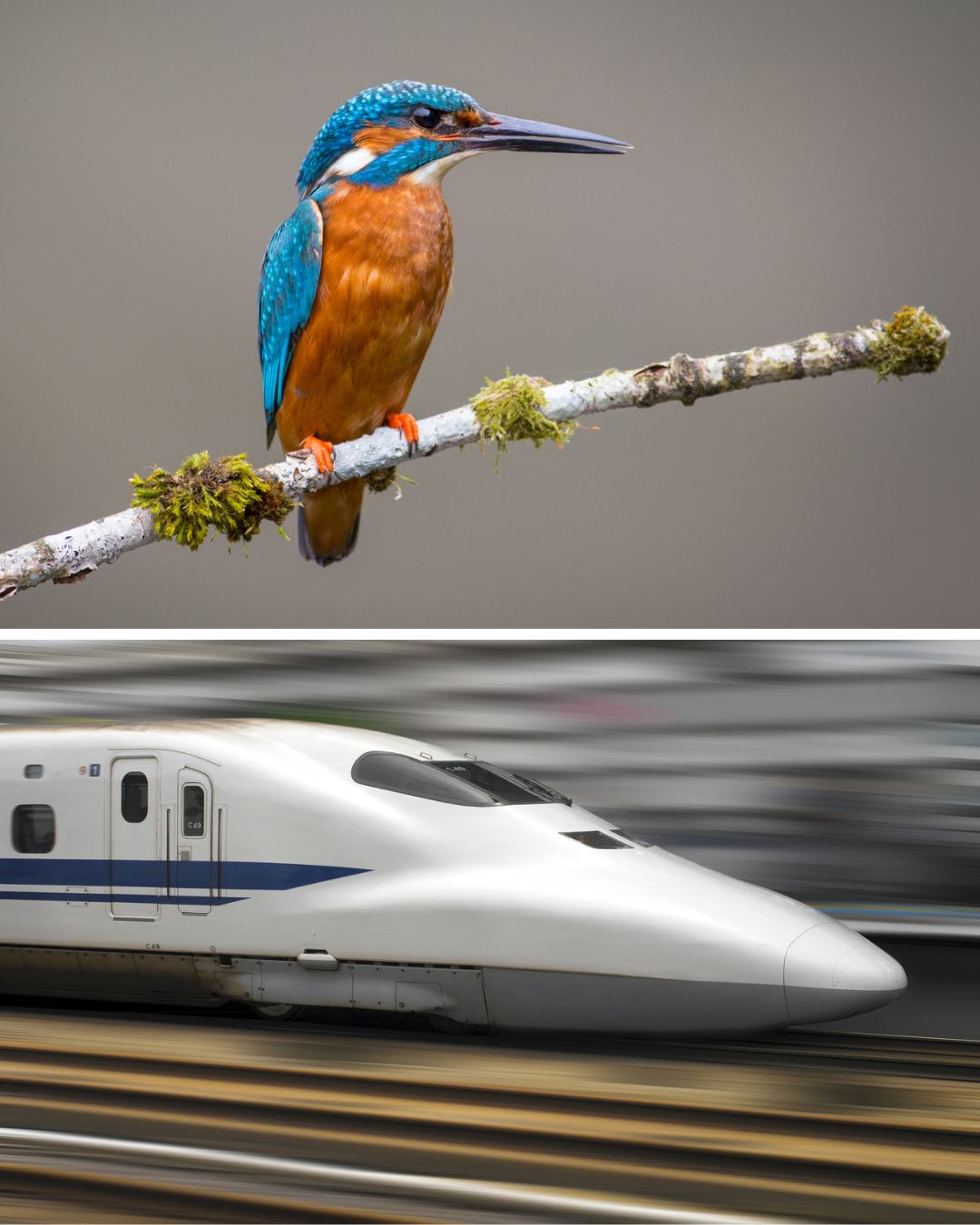
The Shinkansen bullet train design inspired by the kingfisher's beak. Image credit: © Brett Critchley and Steve Allen, Dreamstime.
One of the most famous examples of biomimicry occured in the 1990s. Designers of Japan’s Shinkansen bullet train faced a major problem: when trains exited tunnels at high speeds, the sudden change in air pressure produced deafening sonic booms. These not only disturbed nearby communities but also affected the train’s efficiency.
The solution came from Eiji Nakatsu, the train’s chief engineer and an avid birdwatcher. He observed how the kingfisher dives into water with minimal splash due to the streamlined shape of its beak. Inspired by this, Nakatsu redesigned the train’s nose to mimic the kingfisher’s beak.
The result: a quieter, faster, and more energy-efficient train. The redesign reduced noise pollution, cut energy consumption by 15%, and allowed the train to travel 10% faster.
2. Burrs and the invention of Velcro
In 1941, Swiss engineer George de Mestral noticed how burrs clung stubbornly to his dog’s fur and his clothing during a hunting trip. Curious, he examined the burrs under a microscope and discovered tiny hooks that latched onto loops in fabric and fur.
This observation inspired Velcro, a two-part fastening system composed of hooks and loops. The invention quickly became a practical solution for countless applications, from securing medical devices to making toddler shoes easier for little hands—and their tired parents—to manage.
Its enduring popularity across industries, from clothing and sports equipment to space exploration, demonstrates how a simple natural mechanism can inspire a revolutionary product.
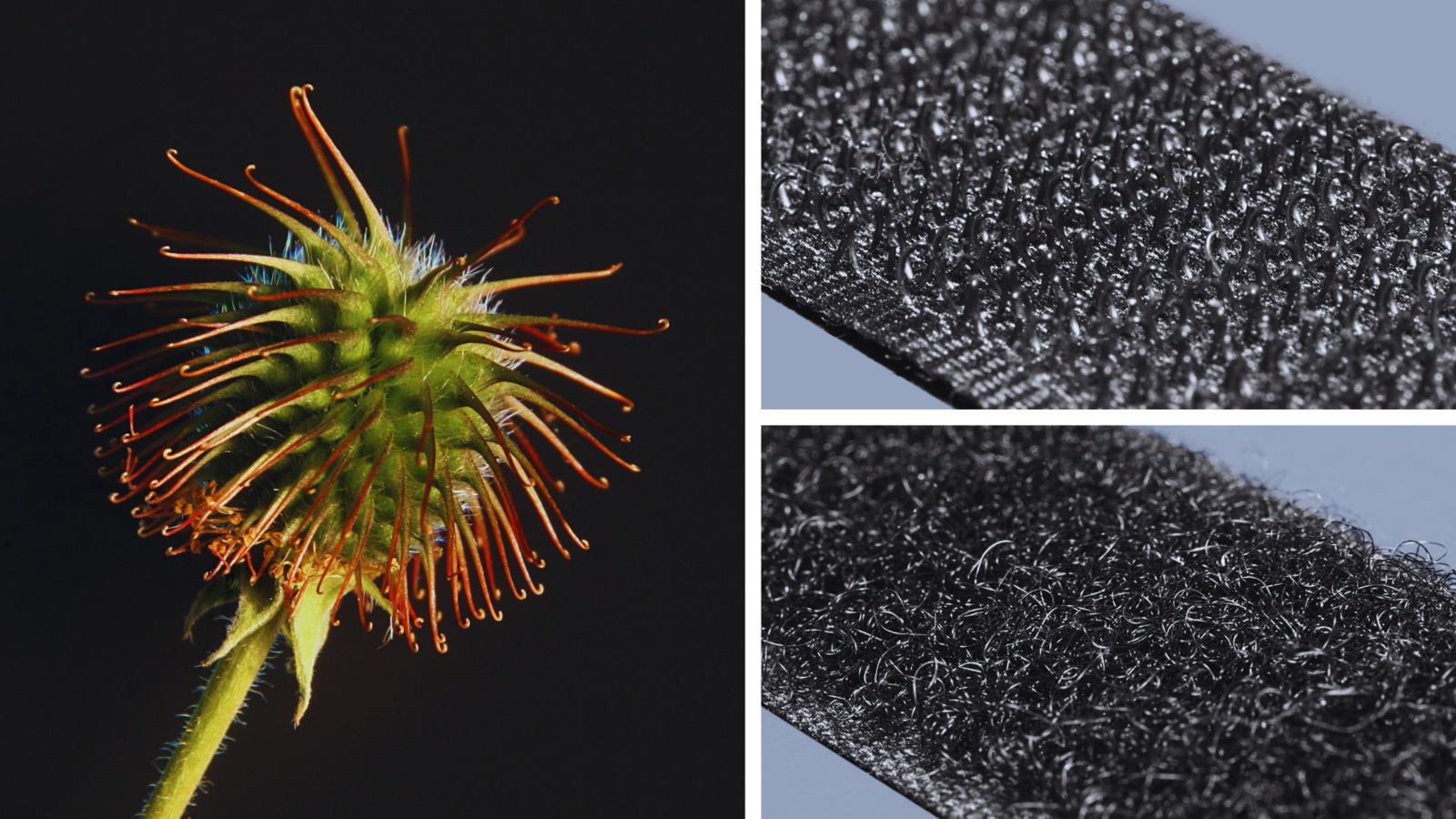
Tiny hooks can be seen covering the surface of this bur vs. the hooks (top) and loops (bottom) of Velcro. Image credit: Zephyris and Alexander Klink, Wiki Commons.
3. Squid skin inspires smart windows
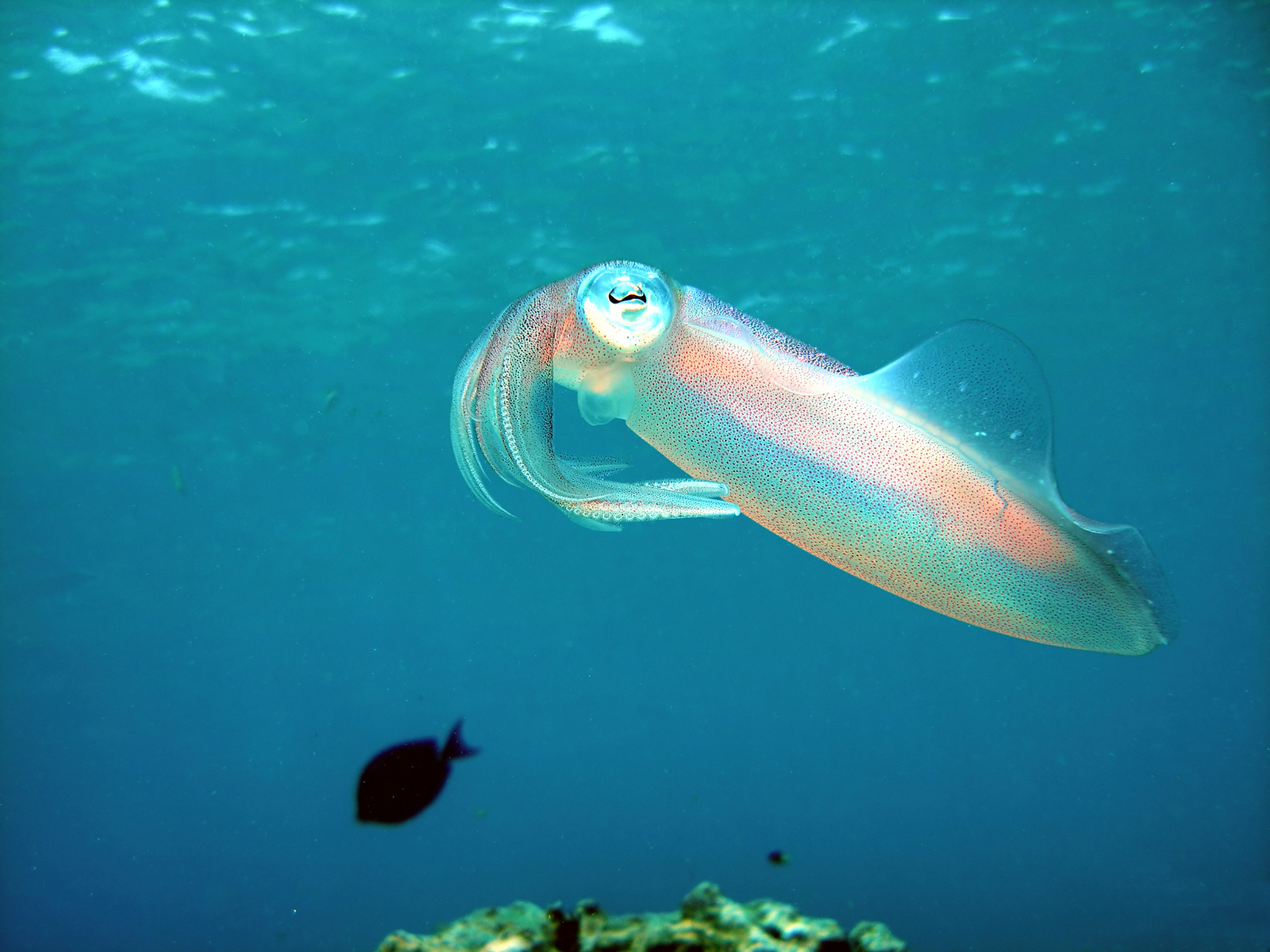
A translucent Caribbean reef squid shows the iridescent colors of her ever-changing skin. Image Credit: © Deborah Coles, Dreamstime.
Buildings lose more than a quarter of their energy through standard glass windows. Inspired by the way squids and krill change color by moving pigments in their skin, researchers at the University of Toronto, led by Professor Benjamin Hatton, developed dynamic panels that control light transmission.
These panels use liquids—such as dye solutions and carbon suspensions—moved through channels in thin plastic sheets. The layered design allows precise control over heat and light. Simulations showed these squid-inspired windows could reduce heating energy by 75%, lighting energy by 20%, and total energy use by 43% compared to existing technologies.
With buildings consuming about a third of the world’s energy—a figure expected to double by 2050—Hatton believes this innovation could be crucial in making future buildings more energy efficient.
4. Gecko feet and advanced adhesives

Close-up of a gecko foot on glass vs. Stanford's robo hand performing a highly hyperextended pinch on only the top surface of an egg. Image credit: © Adogslifephoto, Dreamstime and Stanford's Biomimetics and Dextrous Manipulation Lab.
Geckos can climb walls and even walk across ceilings thanks to microscopic hairs on their feet, called setae, which create molecular attractions known as van der Waals forces.
Inspired by this, researchers at Stanford University developed a synthetic adhesive mimicking the gecko's natural grip. Unlike glue-based adhesives, this one creates strong, residue-free bonds that can be easily removed and reused.
This breakthrough technology has numerous potential applications. In robotics, it can be used for gripping and climbing mechanisms. In medicine, it can provide new options for bandages or surgical tools that adhere without causing damage or leaving residue. Additionally, the material can be applied to manufacturing processes where efficient, reusable, and environmentally friendly adhesion is required.
5. Humpback whale fins and wind turbines
Humpback whale flippers are uniquely adapted for agility and efficiency. Unlike the smooth, streamlined designs often favored in engineering, these flippers have tubercles—rounded bumps along their leading edge. This texture helps break up turbulent airflow, reducing drag and increasing lift. It also allows whales, despite their immense size, to make tight, agile turns while swimming.
Biologist Frank Fish, intrigued by these unusual flipper features, collaborated with aeronautical engineer Philip Watts and inventor Stephen W. Dewar to replicate this natural design in wind turbine blades. Their company, WhalePower, developed blades with tubercles that produce up to 20% more power, reduce noise by at least 2 decibels, and extend component lifespan by 25%. This design also allows turbines to continue producing power even in low-wind conditions.
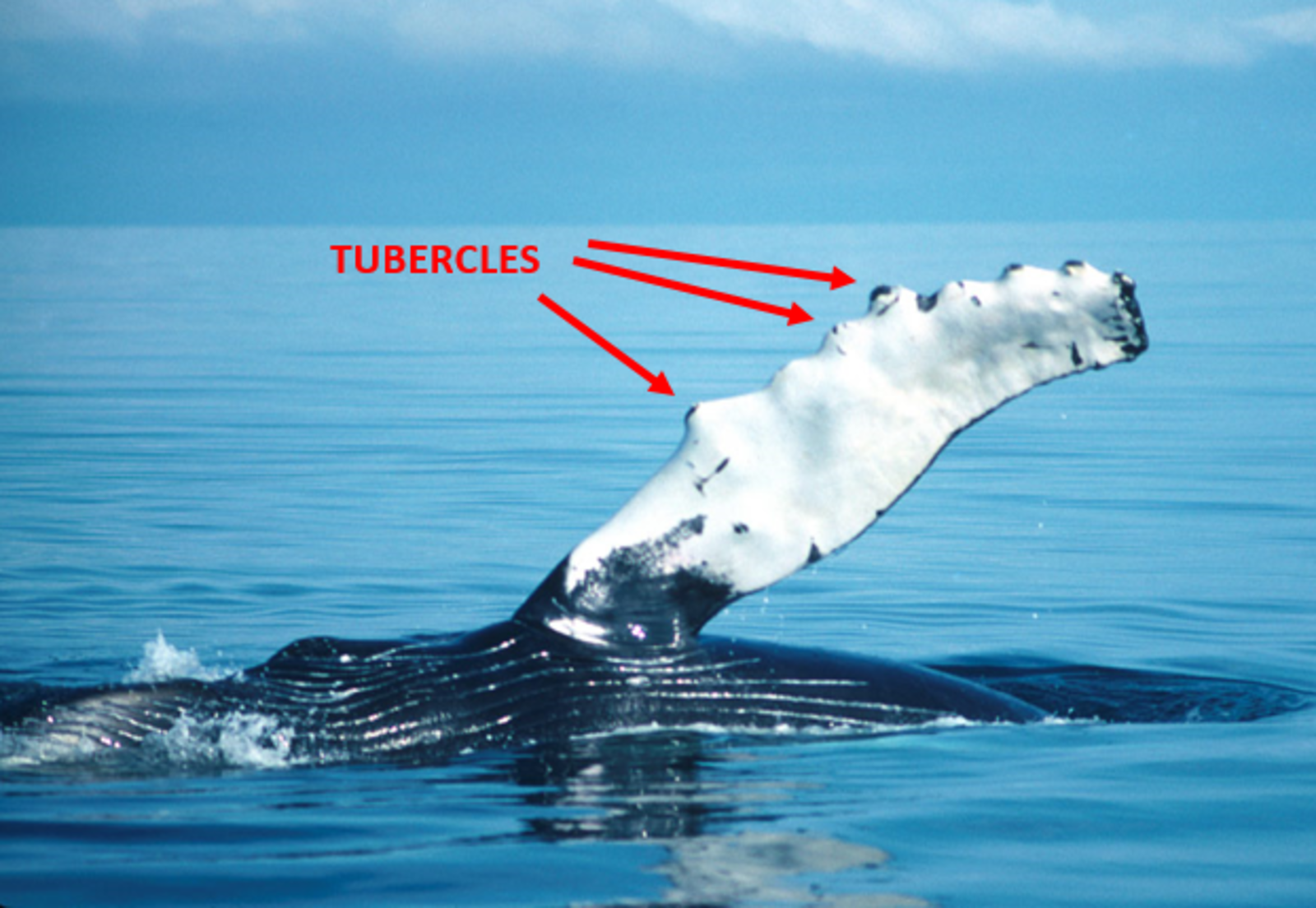
Whale tubercles inspire a more efficient wind turbine design. Image Credit: Biomimicry2016, WordPress.
Listening to Nature’s lessons
Biomimicry reveals that nature is not just a resource—it's a mentor. Whether it’s the streamlined beak of a kingfisher improving high-speed trains or the tubercled flippers of a whale revolutionizing turbine design, these natural inspirations are reshaping our technologies in profound ways.
As we confront escalating environmental crises, turning to nature offers solutions that are both practical and ecologically sound. After all, nature has had billions of years to perfect its systems—perhaps the wisest thing we can do is observe, listen, and learn.
Explore Climate Solutions

.jpg?auto=compress%2Cformat&h=600&w=600)
